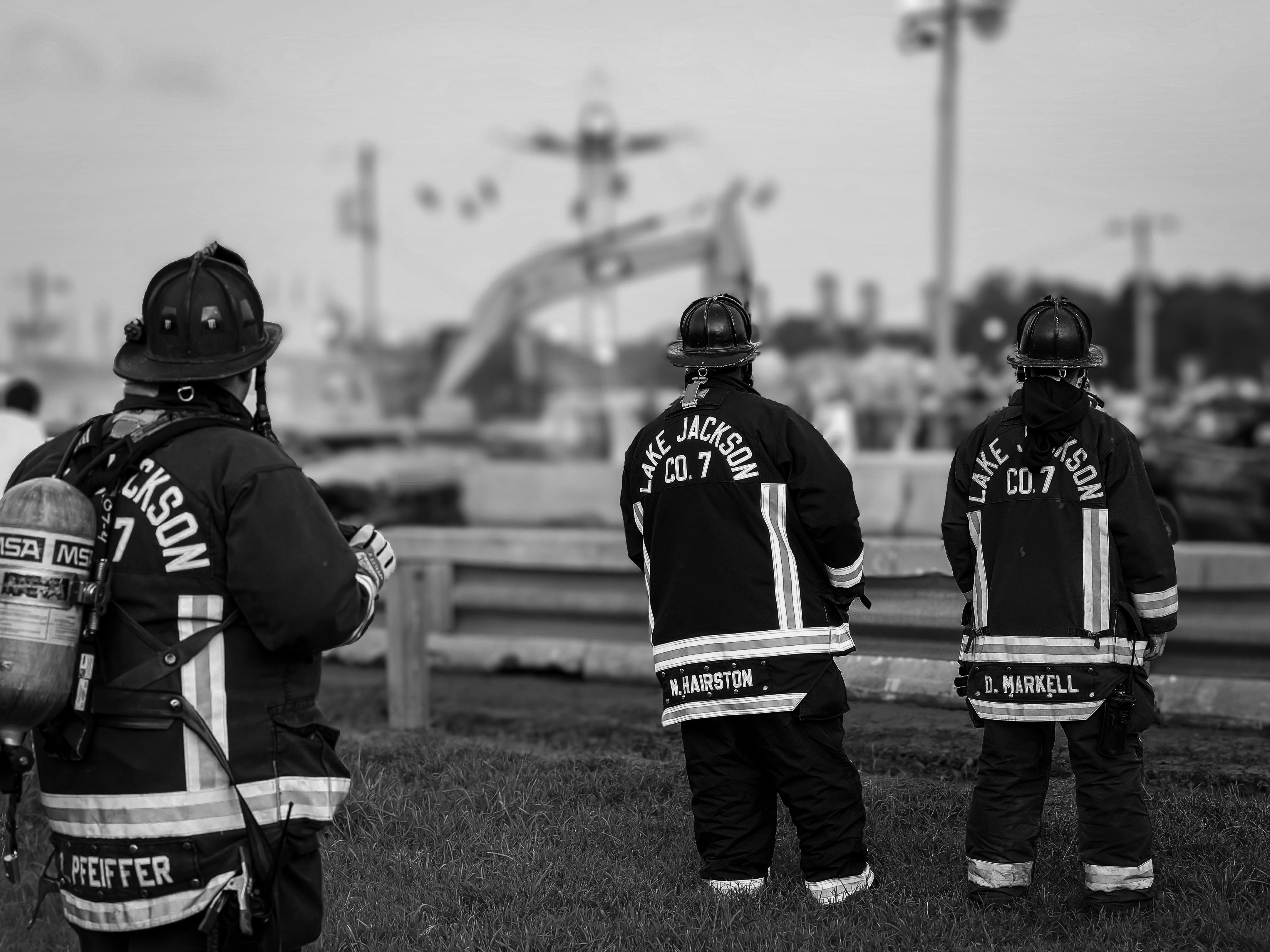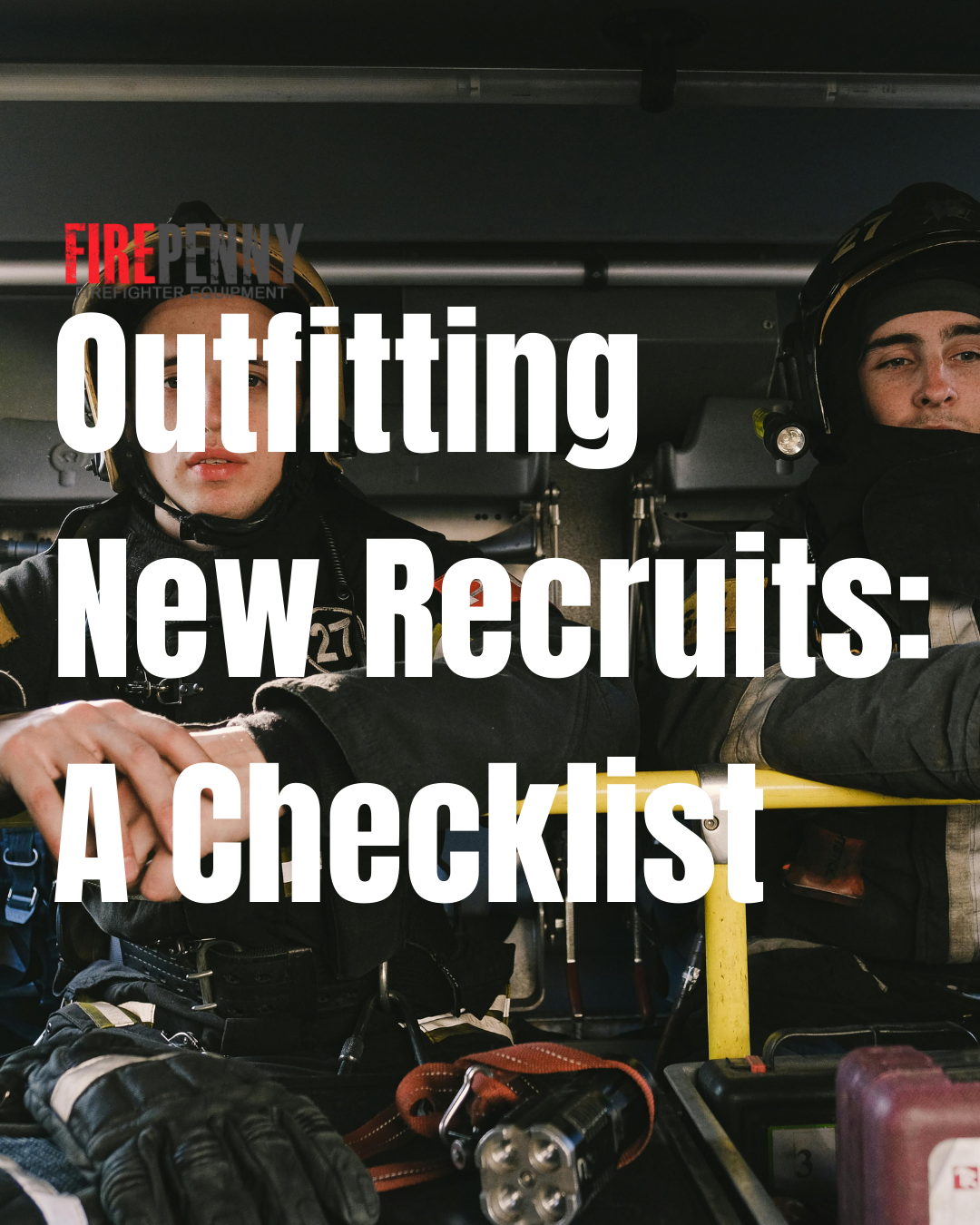Outfitting New Recruits: A Checklist for Training Academies and Departments
Posted by Firepenny on Sep 4th 2025
Posted by Firepenny on Sep 4th 2025
Equipping new recruits with proper gear is critical for both training and safety. Whether it’s a volunteer firefighter entering the service or a career recruit at an academy, having the right firefighter PPE ensures they can train effectively and safely.

Equipping new recruits with proper gear is critical for both training and safety. Whether it’s a volunteer firefighter entering the service or a career recruit at an academy, having the right firefighter PPE ensures they can train effectively, safely, and with confidence.
A baseline recruit package should always include:
Turnout Gear (coat & pants): NFPA-compliant and durable enough to withstand repetitive training wear.
Firefighter Helmet with Face Shield: Critical for head and face protection during live fire drills and training exercises.
Structural Gloves: Designed to handle hoses, tools, and forcible entry equipment while maintaining dexterity.
Fire Boots: Durable, heat-resistant footwear that prevents slips and injuries during fast-paced drills.
SCBA Access: Even if training units are used, recruits should be familiar with donning and operating SCBAs.
Protective Hoods: Reduces carcinogen exposure and provides added comfort under the helmet.
Personal Flashlights & Safety Rope: Essential survival tools that prepare recruits for low-visibility or entrapment scenarios.
In addition to baseline PPE, fire academies and departments should provide training-specific equipment, including:
Extra Training Gloves: For repeated drills that put high wear on gear.
Training Hoses and Nozzles: Dedicated lines for practice ensure operational equipment isn’t worn out prematurely.
Forcible Entry Props & Dummy SCBAs: Specialized tools and props give recruits hands-on experience with real-world challenges.
These additions allow recruits to practice skills safely, while saving operational equipment for frontline use.
Investing in proper recruit equipment isn’t just about meeting NFPA standards—it’s about building confidence and preparedness. When recruits train with gear that mirrors what they’ll use on the fireground, they learn correct habits, develop muscle memory, and gain the assurance that their PPE will protect them when it matters most.
Departments that prioritize quality recruit PPE often see stronger retention rates, fewer training injuries, and smoother transitions from academy to active duty.
1. What PPE is required for firefighter recruits?
Recruits typically need a full set of NFPA-compliant turnout gear (coat, pants, helmet, gloves, boots, and hood) along with access to SCBA units. Departments may also provide flashlights, safety rope, and training-specific gear such as extra gloves or dummy SCBAs.
2. Do fire academies provide gear, or do recruits need to buy their own?
This varies by academy and department. Some academies issue full PPE sets for training, while others require recruits to purchase their own. Departments often help new members by bundling recruit gear packages to keep costs manageable. Reach out to sales@firepenny or call our direct line fora custom quote on bundles and packages.
3. How long should recruit PPE last?
While NFPA 1851 requires PPE to be retired after 10 years, gear used heavily in training may wear faster. Departments often keep a rotation of gear specifically for recruits to extend the lifespan of frontline turnout gear.
4. Why is NFPA compliance so important for recruit gear?
NFPA standards ensure that gear meets minimum safety and performance requirements. Even during training, recruits face heat, smoke, and physical hazards, so non-compliant PPE could increase the risk of injury.
5. How can small volunteer departments afford to equip new recruits?
Many volunteer stations apply for FEMA Assistance to Firefighters Grants (AFG) or partner with neighboring departments to share resources. Bundling affordable, durable PPE from trusted suppliers like Firepenny can also reduce costs without sacrificing safety.
? At Firepenny, we help departments equip recruits with safe, affordable, and NFPA-compliant gear—from turnout packages to training accessories. Shop Firefighter PPE today.
